Cyclosquamata: Lizardfishes
This superorder contains one order, Aulopiformes. Within you will find some of my favorite fishes! One of the major characters of this group is something with the elongation of gill slits or branches or whatever...not too exciting. They also lack a swim bladder.
Synodontoidei
I have nothing to put here, but I'm going to put this here anyways.
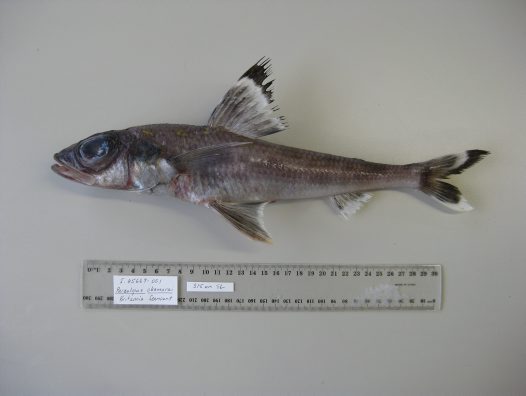
By R. Mintern [Public domain], via Wikimedia Commons
Paraulopidae: Cucumber Fishes
There is only one genus, Paraulopus. Back in the day, cucumbers looked much different, which can be the only reason why these are called cucumber fish. They have large eyes, and large triangular dorsal and pectoral fins.
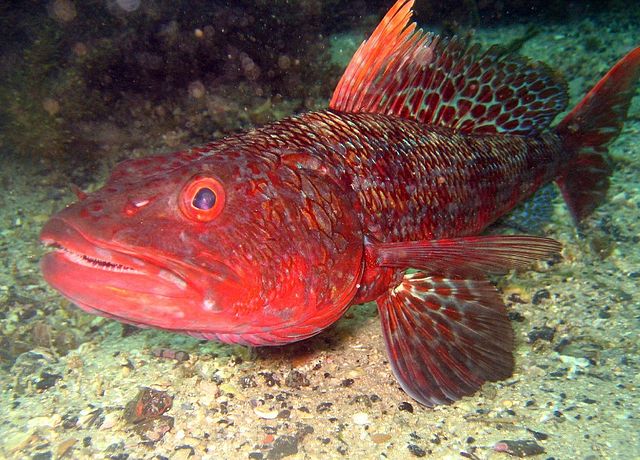
By Richard Ling (Flickr), via Wikimedia Commons
Aulopidae: Flagfins
This family gets their name from their large dorsal fin, which runs down most of the back, and is also quite tall. The first dorsal ray is extremely long.
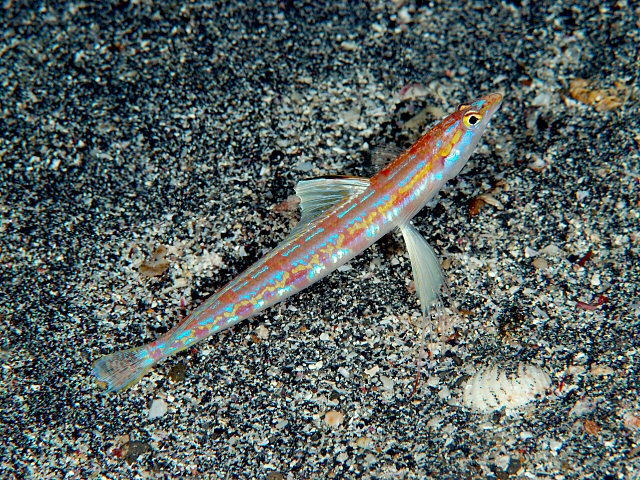
By Izuzuki (http://www.izuzuki.com/), via Wikimedia Commons
Pseudotrichonotidae: Sandiving Lizardfishes
These little fellers are similar to the lizardfishes mentioned below, but are not the same. Some of them have a really gigantic dorsal fin for their body size, although the fish are quite tiny and cute. The name means "false trichonotus," which is another type of fish. I looked up pictures of this family, and they look nothing like them. I don't know who named them, but they should get their eyes checked.
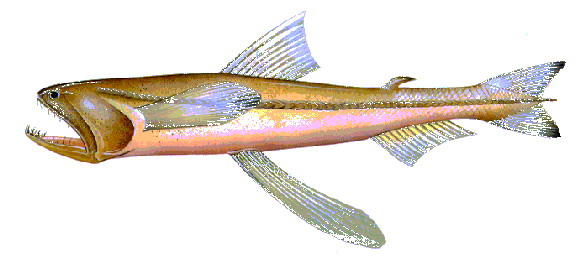
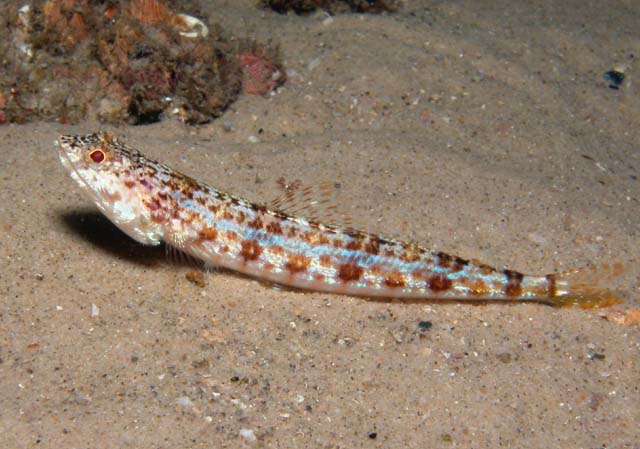
Synodontidae: Lizardfishes
The lizardfish get their name from the shape of their head, which is obviously lizardish in appearance. They have cylindrical bodies, and can be found chilling on the bottom of coral reefs. However, they are pretty well camouflaged, so look hard! This family includes such diverse members as the "suspicious lizardfish," Saurida suspicio. The genus Harpadon is composed of the strangely shaped "Bombay Ducks." These fish are used for food in India, although they have an extremely strong smell when dried. They also look kind of creepy. Do not confuse it with THIS darling website.
Chlorophthalmoidei
Again, nothing to put here. But I have creative license!
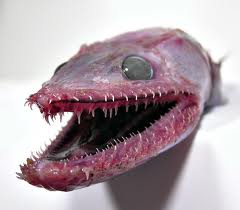
Bathysauroididae: Bathysauroidids
There is only one species, Bathysauroides gigas, which is known as the pale deepsea lizardfish. Not much is known about this fish, but its picture on a random Russian site is super creepy.
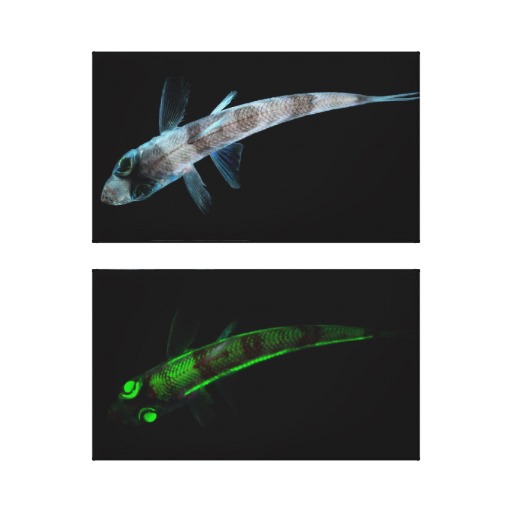
Chlorophthalmidae: Greeneyes
These fish are named after their disproportiately large eyes, which are both iridescent (reflective) and fluorescent (glowing) green.
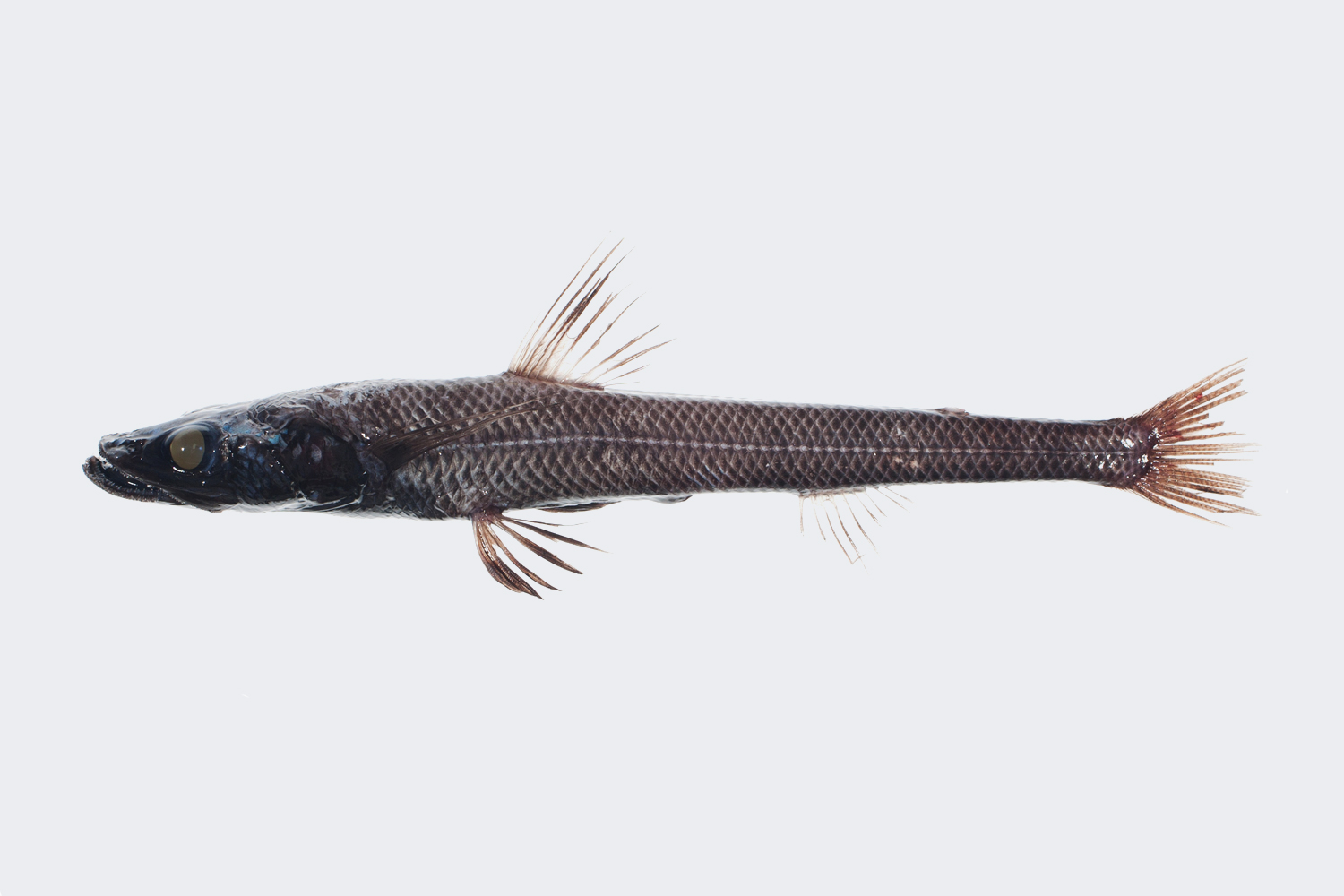
Bathysauropsidae: Lizard Greeneyes
There is only one genus, Bathysauropsis, and two species. Not much is known about them, but they are known as "lizard greeneyes," similar to the family above.
Notosudidae: Waryfishes
These fish are long, skinny fishes with relatively large eyes. Maybe they're called waryfishes because they're always wary of predators? One species, Luciosudis normani, is known as "paperbones," which is kind of a cool name. Although it sounds like a kid that gets bullied a lot for being prone to injury.

Ipnopidae: Deepsea Tripod Fishes
This is the kind of fish you need when you want to balance a camera for a family photo at the bottom of the ocean. Members of this family have elongated rays in their tail and pelvic fins, which allow them to balance on the seafloor like a tripod, and even walk a bit. They have small eyes, which are not very useful for vision. The fish hunts for prey with its pectoral fins, which also have elongated rays. It sticks these in front of itself like antenna and feels for prey.
Alepisauroidei
Still nothing here...except this!
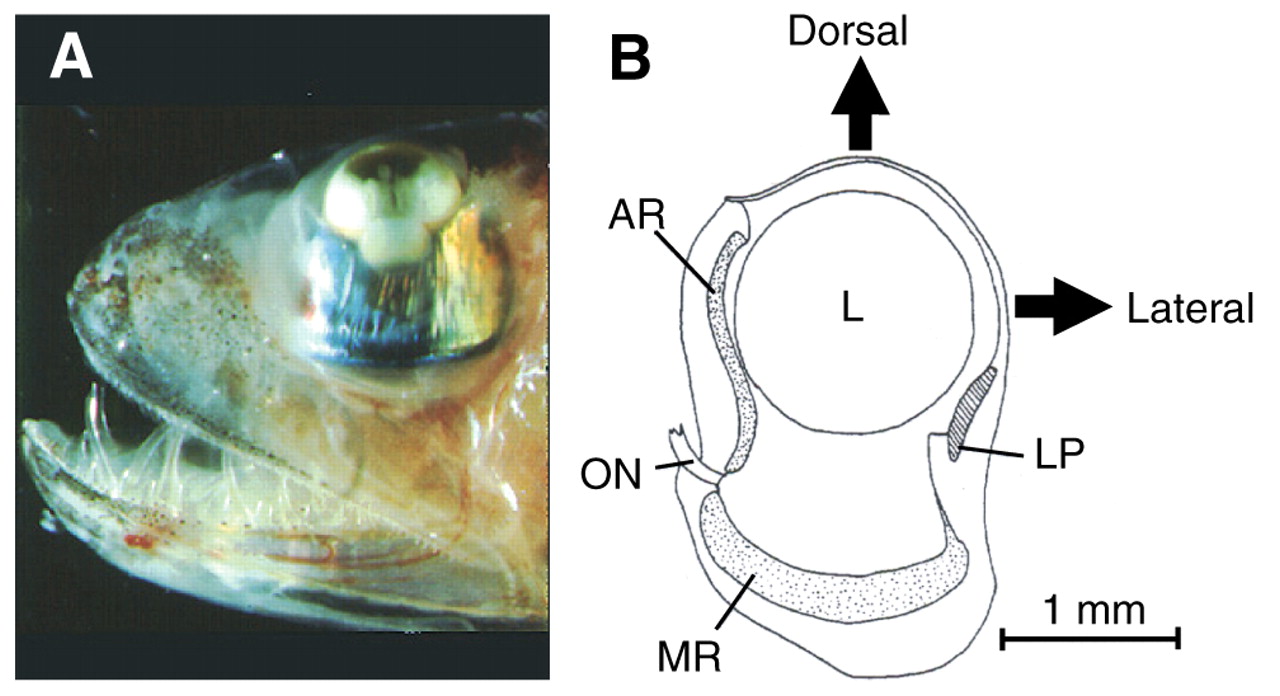
Scopelarchidae: Pearleyes
The super neat thing about this family is that they have two retinas! And I don't mean in total, I mean per eye! The accessory retina (AR in the diagram) allows the fish to see to the sides, even though its telescoping eyes are oriented upwards.

Evermannellidae: Sabertooth Fishes
This family is aptly named, as these fishes have slender fangs protruding from the palatine (palate) bone, curving downwards like the similarly named fossil cats. They also have relatively large eyes, which they most likely use to hunt for prey.
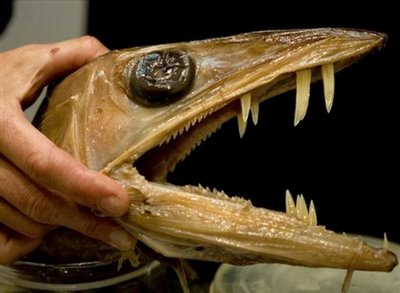
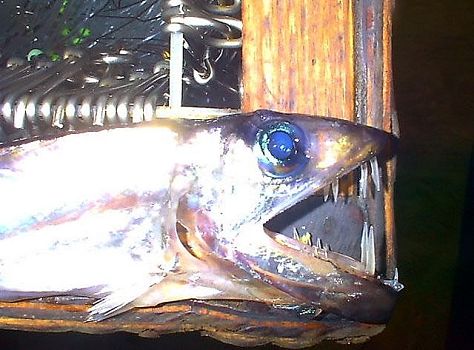
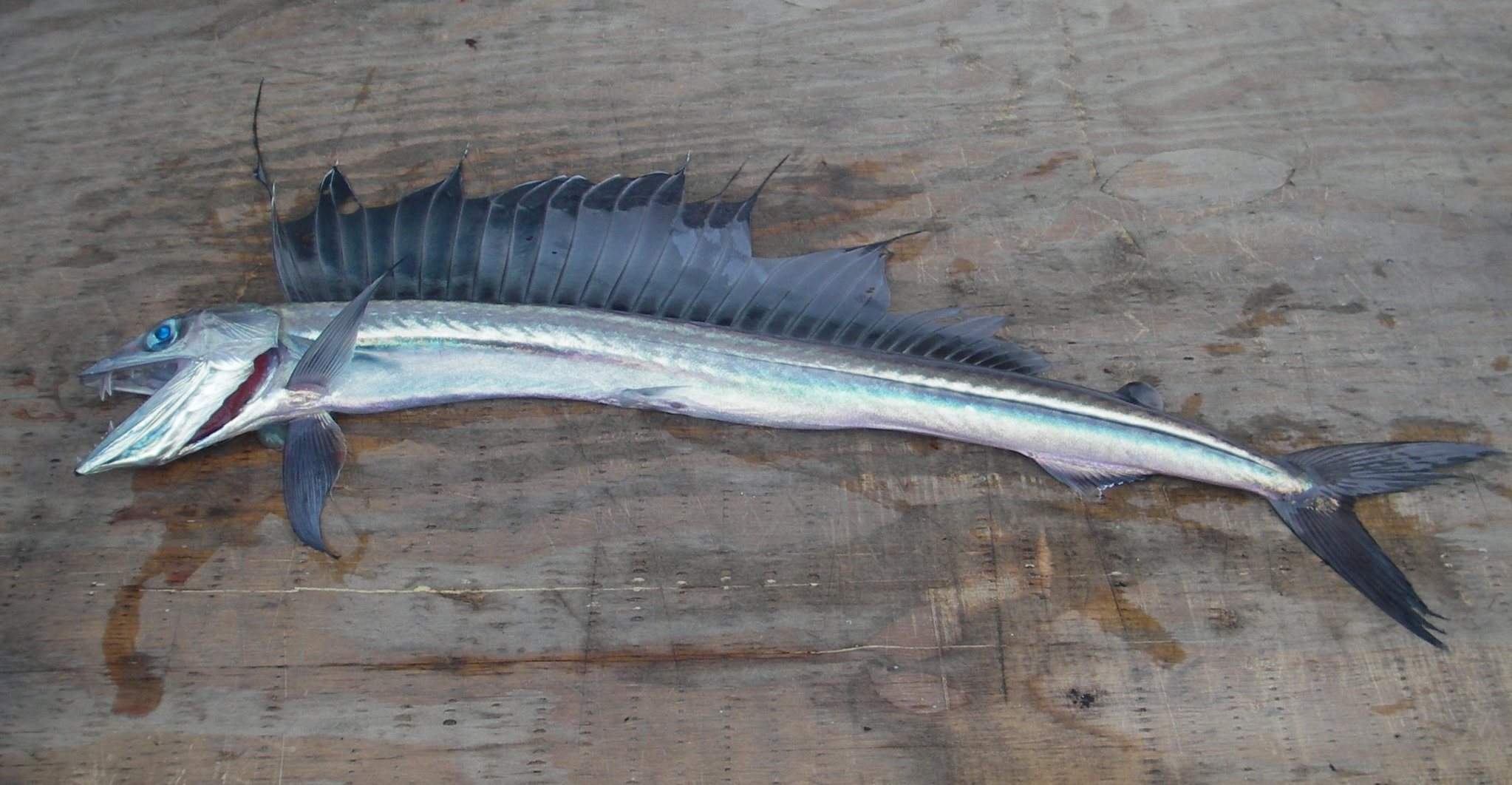
By Allen Shimada, NOAA NMFS OST (http://www.photolib.noaa.gov/htmls/fish2662.htm), via Wikimedia Commons
Alepisauridae: Lancetfishes
Picture a swordfish, with its long, rounded dorsal fin. Now imagine that instead of the pointed snout, the fish has a short snout with a mouth full of razor teeth. Now you've got a lancetfish! I think this is one of the coolest fishes in the ocean. This is the genus Alepisaurus, containing two species. They are characterized by a large dorsal fin that runs almost the whole length of the back, and is about twice as tall as the body itself. The upper lobe of the tailfin has an elongated ray, almost like a skinny filament. This family was recently changed to include Omosudis loewii, the Hammerjaw. This fish is characterized by an enlarged lower jaw, which contains a pair of extremely large fangs.

Paralepididae: Barracudinas
These fish are similarly shaped to barracudas...hence the name. However, as you can see by the phylogeny which you are reading, they are not closely related (barracudas are in Perciformes). They have an elongate body, with long jaws and many teeth.
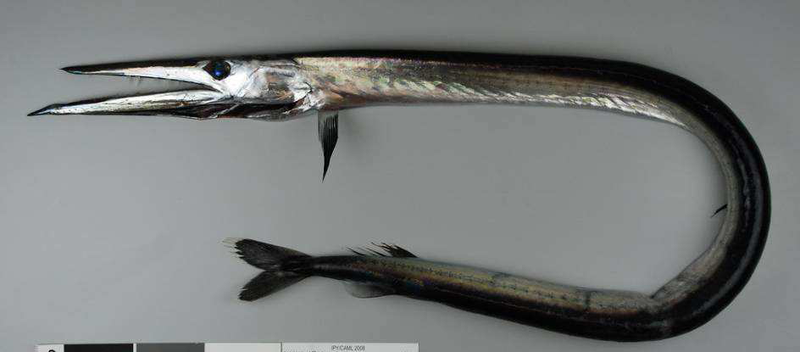
Anotopteridae: Daggertooths
Ok, so these fishes don't get their own family in Nelson, but I like them too much to lump them in with the Barracudinas. There is only one genus, Anotopterus, and three species. These fishes have a long, skinny body, with a long toothy mouth, the lower jaw jutting out like a barracuda. These fishes also differ from other families due to the lack of a dorsal fin. One species, Anotopterus pharao, is named because "it looks similar to the pharaohs." Ouch.
Giganturoidei
You'd think there'd be somthing, but there isn't. But I guess there is, because this is here.

Bathysauridae: Deepsea Lizardfishes
This family has only one genus, Bathysaurus, and two species. They look similar to the lizardfishes of Synodontidae, but have a flatter head and more curved teeth.

Giganturidae: Telescopefishes
There is one genus, Gigantura, and two species. If you saw this fish tail-end first, you'd recognize it by the lengthy lower lobe of the caudal fin, which is often over half the length of the fish. However, if you saw this fish head on...you'd instantly recognize it by its large tubular eyes! These deepsea predators also have an expandable stomach plus a large mouth full of curved teeth.
Scopelomorpha: Lanternfishes
This group contains only one order, Myctophiformes. They are usually found in deep waters, and often have light-producing organs.

Myctophidae: Lanternfishes
This family is one of the most populous, if not THE MOST POPULOUS, in the entire ocean. They get their name from the presence of photophores, which are light-emitting organs. These fishes tend to have large eyes, and a relatively small mouth. They are known for making diel vertical migrations, which is when they migrate towards the surface at night, and towards the depths during the day. This is because they are following the path of plankton, along with avoiding predators. Since these fishes are present in such large numbers, the scattering of sonar by their swim bladders caused oceanographers to originally believe the seafloor was more shallow than it actually is.
Neoscopelidae: Blackchins
This family differs from the Myctophids in a few ways, but they're kind of boring, so I promise it won't be on the final...probably. Based on their name, I'm going to guess that they have a dark patch of pigment on their body...the tail, perhaps? I'm just kidding, it's probably the chin. But who knows, scientists come up with the strangest names for some groups.